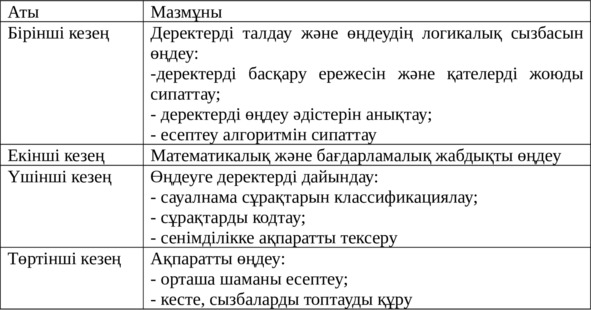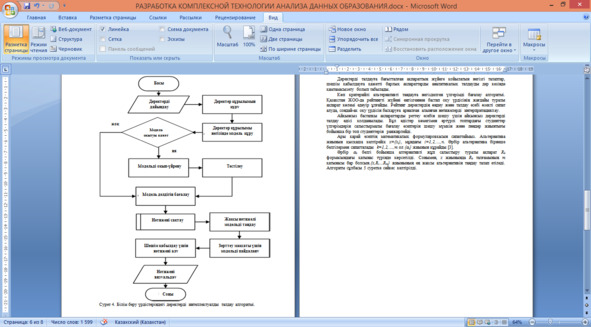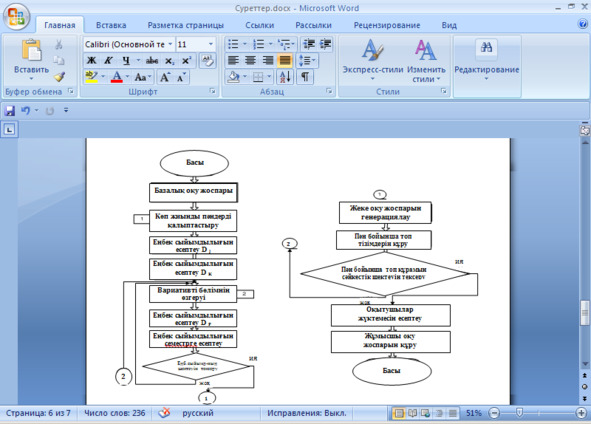
Полная версия:
Труды III Республиканской научно-практической online-конференции «Образование XXI века: проблемы, тенденции и перспективы»

Труды III Республиканской научно-практической online-конференции «Образование XXI века: проблемы, тенденции и перспективы»
Составитель Николай Сергеевич Лустов
ISBN 978-5-0059-7248-4
Создано в интеллектуальной издательской системе Ridero
ВСТУПЛЕНИЕ
Сборник III Республиканской научно-практической online конференции «Образование XXI века: проблемы, тенденции и перспективы», создан на базе Дистанционного образовательного портала «Евразийская наука».
Дистанционный образовательный портал «Евразийская наука» – сетевая многофункциональная открытая площадка, созданная для педагогов, воспитателей, школьников, студентов и магистрантов.
Миссия портала – повышение профессионального мастерства педагогов и обучающихся, доступности удовлетворения их запросов и ожиданий на основе использования разнообразных форм и технологий сетевых изданий. Дистанционный образовательный портал «Евразийская наука» является средством массовой информации в сфере образования (Свидетельство о постановке на учет, переучет периодического печатного издания, информационного агентства и сетевого издания №17367-СИ выдано 22.11.2018 г. Комитетом информации Министерства информации и коммуникаций Республики Казахстан).
Абдувалова А. Д.1, Ешмаханова Т. К.2, Абдувалова Н. Д.3
БІЛІМ БЕРУ ДЕРЕКТЕРІН ИНТЕЛЛЕКТУАЛДЫ ТАЛДАУ АЛГОРИТМІН ӨҢДЕУ
(1,2М.Х.Дулати атындағы Тараз өңірлік университеті, Тараз қ.
3Бурыл орта мектебінің физика мұғалімі, Тараз қ.)
Қазақстанның жоғары оқу орнында (ЖОО) білім алушылардың оқытылу қызметі туралы көп көлемде ақпарат жинақталған, және олардың көпшілігі студенттердің бүтіндей оқыту мерзіміндегі алған жинақталған орта баллдары бойынша ранжирлеуде статистикалық есеп беру үшін қолданылады. Оқыту үрдісін жетілдіру мақсатында шешім қабылдау үшін түсінікті және көрнекі нәтижелер алу үшін деректерді ағымдағы талдау және ақпаратты өңдеудің интеллектуалды алгоритмдерді қолдану қажет. Дегенмен білім беру сферасында шешім қабылдау және деректерді талдауға Data Mining әдістерін қолдану мәселелері шешілмей келеді [1]. Сондықтан білім беру сферасында ең жиі қолданылатыны интеллектуалды талдаудың сипаттама моделдерінің сатылары 1 -ші кестеде көрсетілген.

Деректерді интеллектуалды талдау алгоритмдері деректерді интеллектуалды талдау модельдерін құратын механизм болып табылады. Модель құру үшін алдын-ала деректер жиыны талданады, белгілі заңдылықтар мен трендтерді іздеуді жүзеге асырады. Алгоритм деректерді интеллектуалды талдау параметрлерінің моделін анықтауға арналған нәтижелер қолданылады. Содан соң бұл параметрлер барлық деректер жиынына қолданылады, онда қолдануға жарамды заңдалықтарды анықтау мен нақты статистиканы алу. Ұсынылған әдісті график түрінде көрсетуді қолданудың қадамдар тізбегі 1-ші суретке сәйкес келтірілді.
Алгоритм құрған деректерді интеллектуалды талдау моделі әртүрлі формада болады және оған келесілер енеді:
– шешім қабылдау ағыны, студент болашақ сессиясын тапсыруын болжайды;
– математикалық модель, кафедралар (факультеттер т.б) бойынша сессия нәтижелерін болжайды;
– білім беру үрдісіндегі деректер жиынының байланыстар варианттарын сипаттайтын кластерлер жиыны т.б.

Деректерді интеллектуалды талдау бойынша модуль құру үшін деректер көздерін анықтау қажет, деректерді интеллектуалды талдау моделі және интеллектуалды талдау құрылымы құрылуы тиіс [2].
Деректерді интеллектуалды талдау моделіне негізделген әдістерден тәуелді келесі нәтежелерді алуға болады:
– шешім қабылдау алгоритм ағашы көмегімен моделдеу нәтижелері;
– кластеризациялау алгоритмі негізінде моделдеу нәтижелері;
– уақыттық қатар алгоритмдері бойынша моделдеу нәтижелері;
– қысқартылған Байес алгоритмі бойынша моделдеу нәтижелері;
– өзара байланыс ережелерін қолданып моделдеу нәтижелері;
– ассоциация алгоритмдері бойынша моделдеу нәтижелері;
– нейрон желілерін қарау құралдары көмегімен моделдеу нәтижелері;
– логистикалық регрессия алгоритмін қолданып моделдеу нәтижелері.
Қазақстан ЖОО-да рейтингті жүйені енгізгеннен бастап оқу үрдісінің жағдайы туралы ақпарат көлемі едәуір ұлғайды. Рейтинг деректердің өңдеу және талдау есебі өзекті сипат алуда, сондай-ак оқу үрдісін басқаруға арналған алынған нәтижелерді интерпритациялау қажет етеді.
Айқынсыз бастапқы ақпараттарды реттеу есебін шешу үшін айқынсыз деректерді талдау әдісі 2-ші суретке сәйкес алгоритмі қолданылады. Бұл әдістер көмегімен әртүрлі топтардағы студенттер үлгерімдерін салыстырмалы бағалау есептерін шешу мүмкін және пәндер жиынтығы бойынша бір топ студенттерін ранжирлейді.
Ары қарай есептің математикалық формулировкасын сипаттаймыз. Альтернатива жиынын қысқаша келтірейік х= {xi}, мұндағы i=1,2,…,n. Әрбір альтернатива бірнеше белгілермен сипатталады k=1,2,…,m ол {aі} жиынын құрайды. Әрбір аk белгі бойынша алтернативті жұп салыстыру туралы ақпарат Rk формасындағы қатынас түрінде көрсетілді. Сонымен, x жиынында Rk талғамының m қатынасы бар болсын. {x, Ri… Rm} жиынының ең жақсы альтернативін таңдау талап етіледі.

Сонымен студенттерді бірнеше пәндер жиынтығы бойынша үлгерімдерін ранжирлеу есебін шешу мүмкіндігі туады. Сипатталған алгоритм көмегімен осыған ұқсас көптерген есептерді шешуге болады және рейтинг деректерінен оқу үрдісі туралы қосымша маңызды ақпараттарды шығару мүмкіндігі болады.
Әдебиеттер
1.Макшанов, А. В. Технологии интеллектуального анализа данных: Учебное пособие / А. В. Макшанов, А. Е. Журавлев. – СПб.: Лань, 2018. – 212 c.
2. Тюрин, Ю. Н. Анализ данных на компьютере / Ю. Н. Тюрин, А.А. акаров. – М.: МЦНМО, 2016. – 368 c.
Абдукаримова А. Ю., Кашкынбаева З. К.
Бастауыш сынып оқушыларының сөйлеу мәнерін дамытуда инновациялық технологиялардың алатын орны
(М.Х.Дулати атындағы Тараз өңірлік университеті, Тараз қ.)
Бүгінгі еліміздің білім беру жүйесіндегі реформалар, өзгерістер мен жаңалықтар мұғалімнің жаңа идеялармен жұмыс жасауына мол ықпалын тигізуде. Әрбір ізденіс жолындағы мұғалім кәсіби шеберлігін шыңдай отырып, өзіне «Не үшін оқытамыз?», «Нені оқытамыз?» және «Қалай оқытамыз?» деген сұрақты қойып, жеке тұлғаның ана тілді меңгеруіне жаңа идеяларды туындатып, әр сабақта оларды жан-жақты қолданумен қатар жаңаша оқытудың тиімді жолдарын іздесе, заман талабына жауап бергенінің нышаны.
Қазіргі заман талабында жаңартылған білім беру мазмұнының басты ерекшелігінің бірі – бастауыш сынып оқушыларының өз ана тілінде нақышына келтіріп сөйлетудегі инновациялық технологиялардың орнын дәріптеу болып табылады. Оқушылардың сауатты жазып қана қоймай, өз ойын айқын жеткізе алатын тұлға етіп тәрбиелеудің негізі – бастауыш сыныптан басталатындығы белгілі. Сондықтан, ұлттық тіл мен ұлттық сананың қалыптасуы – ата-бабамыздың салып кеткен дара да сара жолы екенін мұғалім сол сатыда ұғындыра білуі қажет.
Бастауыш сынып оқушыларының мұғалімдері мектепке келген күнінен бастап, олардың тілін дамытып, түрлі тақырыпта сөйлеуіне жағдай жасайтыны белгілі. Жоспарланған жұмыс бойынша мұғалім түрлі тілдік проблемалар туғызып, сөйлеуге белсенділігін арттырады. Бірақ қалай?
Бастауыш сынып мұғалімі сөйлеудегі белсенділік пен мәнерді тепе-теңдікте қалыптастыру үшін оқу жүйесін дұрыс түсініп, өз жұмыс жоспарын толықтырады. Демек, оқу бағдарламасынан тыс қосымша тапсырмалар беріп, баланың ынтасын оятып, әрбір оқушының сөйлеу деңгейін, ойлау қабілетін, шығармашылығын зерттейді. Ана тілі сабақтарында әңгімелеуге тән тапсырмаларды орындатып, мұдірмей сөйлеуге дағдыландырады.
Бастауыш сыныпта білімалушылардың тілін дамыту барысында, ең әуелі сөздік қорының көп болуын және оны тиімді қолдана білуін басқарған жөн. Осы мақсатта жүйелі еңбек еткен мұғалімнің методикасында ауызекі сөйлеу тіліне сай алғашқы күннен бастап-ақ, сюжетті суреттер бойынша сұрақтарға жауап беру арқылы әңгімелеу, өзінің жанұясы жайлы әңгіме құрастыру, өзі жайлы мақтанышпен айту секілді жұмыс түрлері болғаны абзал. Бұл баланың эмоциясын көрсетумен бірге өз ойын анық жеткізуге, сөздерді орынды қолданып, оны дұрыс айтуға, сөздік қорын байытуға бағыттайды.
Тілді дамытуда тіл мәдениетінің жоғары деңгейде болуын қадағалаған мұғалім тіл арқылы өз ойын дұрыс, дәл және мәнерлі жеткізуге болатынын ескеріп, оқушының да ізденіске бейімделушілігін молайту жолдарын арттырады. Осы орайда инновациялық технологияның әртүрлі коммуникациялық тәсілдерді пайдалануына мүмкіндік беретіндігі көрсетіледі.
Оқушының мәнерлеп сөйлеуіндегі проблемаларды шешу негізгі мақсат болса, мұғалім баланың сөздерді тез қабылдап, оны қолдану орнын білуге жағдай жасап, мүдірмей сөйлеуге машықтандырады.
Бастауыш сынып оқушысының сөйлеу мәнерін қалыптастыруда тек қана өз ұлтымыздың ауызекі шығармашылығының тигізер ықпалы зор. Себебі, ағартушы, ақын Ахмет Байтұрсыновтың өзі: «Тіл дамыту мәселесі тек қана грамматика заңдарын үйретіп, не болмаса, сөздерді балаға үйрету ғана емес, сөзді тіршілігінде пайдаланып көрсету барысында ғана шешуге болады», – деген тұжырымы сөйлеу тілі мен сөздік қоры молая бастаған сайын бала айналадағы адамдармен, құрбылары мен белсенді түрде сөздік қарым-қатынас жасайтынын айтады.
Ол үшін халқымыздың ертегі, аңыз әңгімелері, мақал-мәтелдері, жұмбақ, жаңылтпаштары жеңіл тілімен беріліп отыруы керек. Балаға жаңылтпаш үйреткенде, оның айту процесін бақылап, сөзді дұрыс сөйлеуге бағыттаған жөн. Өйткені, кейбір баланың тілі келмей, жаңылтпаш айту ережесін бұзып алып отырады. Ал, мұғалім соның бәрін зерттей отырып, сөздердегі дыбыстарды анық айтуға дағдыландырады. Ауыз әдебиетінің келесі түрі – жұмбақ айтқызу. Бұл баланы тапқырлыққа үйретумен қатар ойлау қабілетін кеңейтіп, оның тілін ұштауға көмектеседі. Ал, баланың сөйлеу нақышын реттеуде мақал-мәтелдерді орынды қолдану мен оның пайдасы орасан зор. Оқушылардың сыныпта және сыныптан тыс оқуда белгілі бір тақырыпты оқытқан кезде екінші бір тақырыппен сәйкестендіріп алу ыңғайлы болады. [2,456].
Бастауыш сыныпта сөйлеу мәнерін меңгертудің келесі жолы: кешенді оқыту технологиясы. Ал, оқушылар үшін: бейнетаспаны көрсету арқылы тақырыпқа шығуға болады. Тақырыпты тапқаннан кейін оқушылар алдарына мақсаттар қойып, сабақ барысында тақырыптың мазмұнын ашатын дидактикалық үлестірмелі жаттығуларды берген дұрыс. Сонымен қатар жұптық жұмыста оқушылардың бірлесіп диалог құрып, оны сахналастыру. Бұл оқушылардың бір-бірімен сөйлесу арқылы сөздік қоры мен сөйлеу дағдысын қалыптастыруын дамытады.
Сабақ барысында топтық жұмыста оқушыларға сурет бойынша ертегі құрастыру тапсырылуы мүмкін. Дәл осы уақытта оқушының сөйлеу тілі мен ойлау, қиялдау қабілеттері де дами түседі. Мұнда ой бөлісудің өзі оқушының көпшілік алдында сөйлеп, мәнерді реттеу жолдарын қалыптастырып, өзіне сенімділігін шыңдайды. Сондай-ақ, ой бөлісуде артық сөздерден аулақ болуға және тиянақты сөйлеуге дағдыланады.
Сөйлеу процесінде бастауыш сынып оқушыларының мәнерді реттеуіне қарай айтылатын сөздерден басқа дауыстың қатты болуы, сөйлеу жылдамдығы мен үзіліс, бет әлпеті, сияқты элементтер де маңызды. Өткені сөйлеу тікелей тыңдаумен байланысты. Бұл өмірде оқушылар алдымен қоршаған ортадағы адамдармен сөйлесуді үйреніп, өз ортасында ойын білдіру арқылы білім алып, ой өрісін дамытып, үшін сөйлеу шеберлігін жетілдіреді. Ал, сөйлеу мәнерінің балаға әсер етуі сыныптағы оқушылардың бірлесіп жұмыс жасауына, тақырыптарды бірігіп талқылауына, тіпті, бірлесіп шешім қабылдауына және проблемаларды шешудің маңызды саласы болып табылатынына көз жеткізеді.
Оқушылардың өз ойын жеткізуге, нақышын келтіріп сөйлеуге үйрететін әдістің бірі – «Өз ұйқасын тап». Кез келген мақал-мәтел, өлең жолдарына мысал келтіріп таптыруға болады.
«Әңгімені әрі қарай жалғастыр» әдісінде баланың ойлауы мен сөздік қорының баюына, жүйелі сөйлеуіне мүмкіндік беріледі. Балаларға арналған шығарманы өту барысында қолдануға болады.
«Бір минуттық әңгіме» тәсілі.
Оқушылар қарама-қарсы сызық бойымен қатарға тұрып, жұптық әңгіме жүргізеді. Мұнда естіген ертегілерін айтып бөлісуге мол мүмкіндік бар.
«Менің сөзім» әдісі. Сыныптағы бір оқушы бүгінгі сабақтан үйренгендерін қорытындылап айтады да басқа бір оқушының атын атайды. Сөзді сол оқушы жалғастырады. Бұл барлық оқушының сөйлеп, пікір алмасуына негіз болады.
«Суретті әңгімеле» әдісінде оқушыларды бір бөлігі берілген сурет бойынша әңгімелету, суреттегі оқиғаның басын және соңын болжату арқылы тапқызу болып есептеледі. Болжам арқылы айтылған сурет бойынша әңгіме оқушылардың өз әңгімелері тыңдалғаннан кейін толық нұсқасы оқылады. Сөйтіп, өздері құраған әңгіме мен әңгіменің шынайы сюжетін салыстырып сөйлеуді үйренеді [2,56].
Қорыта айтқанда педагогикалық ойындар технологиясы ойын түрінде ұйымдастырудың әдістері мен тәсілдерінің жиынтығы боп, сөйлеу мәнерінің дамуына қызықтырушы құрал ретінде қолданылып, баланың ауызша сөйлеу дағдысын, сөйлей білуін нақтылы сөйлеу әрекеттері арқылы жүзеге асу жағдайын белгілейді. Нәтижесінде білім мен ойын сабақта елеусіз байланысып, бала өзін еркін ұстай алады. Оқытуды сапалы ету үшін, бастауыш сынып оқушыларының сөйлеу мәнерін дамытуда жаңартылған білім мазмұнының инновациялық тенология, жаңа әдіс-әсілдерді орынды қолдана отырып, сабақтарымды түрлендіріп өтуді жалғастырып, дамытамын.
Пайдаланылған әдебиеттер:
1. Педагогикалық энциклопедия. -Алматы, 2009.
2. Сабыров Т. Болашақ мұғалімдердің дидактикалық дайындығын жетілдіру. —Алматы, 200.
Абышева Н. К.
Білім беру процесінің сапасын арттыру мақсатында Заманауи білім беру технологияларын пайдалану
(«Балдәурен» бөбекжай-бақшасы» МКҚК, СҚО, Петропавл қаласы)
Қазіргі уақытта МДҰ педагогикалық ұжымдары жұмысқа инновациялық технологияларды қарқынды енгізуде. Сондықтан мектепке дейінгі мекеме мұғалімдерінің негізгі міндеті – балалармен жұмысты ұйымдастырудың әдістері мен формаларын, жеке тұлғаны дамыту мақсатына оңтайлы сәйкес келетін инновациялық педагогикалық технологияларды таңдау. Бүгін біз инновациялық технологиялар және оларды мектепке дейінгі мекемеде тиімді пайдалану туралы сөйлесетін боламыз. Мектепке дейінгі білім берудегі заманауи педагогикалық технологиялар мектепке дейінгі білім берудің мемлекеттік стандарттарын іске асыруға бағытталған. Алдымен «технология» терминінің өзі нені білдіретінін еске түсірейік.
Технология-бұл кез-келген бизнесте, шеберлікте, өнерде қолданылатын әдістердің жиынтығы (түсіндірме сөздік).
Педагогикалық технология-бұл формалардың, әдістердің, әдістердің, оқыту әдістерінің, тәрбие құралдарының арнайы жиынтығы мен орналасуын анықтайтын психологиялық – педагогикалық көзқарастардың жиынтығы; бұл педагогикалық процестің ұйымдастырушылық-әдістемелік құралы (Б. Т. Лихачев).
Қазіргі білім беру технологияларының қатарына мыналар жатады:
* Денсаулық сақтау технологиялары;
* жобалау қызметінің технологиялары
* зерттеу қызметінің технологиясы
* ақпараттық-коммуникациялық технологиялар;
* тұлғаға бағытталған технологиялар;
* мектепке дейінгі және тәрбиеші портфолиосының технологиясы
* ойын технологиясы
* «ТРИЗ» технологиясы және т. б.
1. Денсаулық сақтау технологиялары
2. Жобалау қызметінің технологиялары
3. Зерттеу қызметінің технологиясы
4. Ақпараттық-коммуникациялық технологиялар
5. Жеке бастың гигиенасы технология
6. Ойын технологиясы
Сіздердің назарларыңызға бүгінгі күні бізде бар жаңа нәрселерді ұсынамын. Бұл кинетикалық құм, 3D қамыр және Диенеш блоктары.
Кинетикалық құм-қалыптау Құмы. Кинетикалық-бұл Швеция ғалымдары жасаған, баламен ойнауға арналған инновациялық материал. Барлық жаңа қасиеттер заттың ерекше құрамымен қамтамасыз етіледі.
Кинетикалық құм 98% құмнан және 2% полимерден тұрады. Бұл құмның пішінін дәстүрлі құмға қарағанда әлдеқайда жеңіл ұстауға мүмкіндік береді бұл жас балаларда ғана емес, ересектерде де жағымды эмоциялар тудыратын көркем шығармашылық. Қарым-қатынасқа көмектеседі. Апатияны жояды, осылайша белсенді өмірді дамытуға көмектеседі. Кинетикалық құм балада шығармашылықты ашады, қолдар мен саусақтардың моторикасын дамытады. Құм релаксацияға, стрессті жеңілдетуге, қиялды ашуға көмектеседі. Бұл баланың көңілін көтерудің тамаша мүмкіндігі, және оны ғана емес, сонымен бірге өзіңізді де демалуға болады.
3D қамыр-модельдеуге арналған қамыр өте жақсы созылады, пішінін сақтайды, бетіне жабыспайды және кірленбейді. Жинақта 5 ашық түсті пластилин, материалды айналдыруға арналған роликтер, кескіштер, қалыптар және жылжымалы дөңгелектері бар көлікті жасауға арналған негіз бар. Балалар өз заттарын соқыр ете алады немесе нұсқаулар мен трафареттерді қолдана алады. Сіз қысуға және созуға, әртүрлі пішінге келтіруге және әртүрлі консистенцияға жеткізуге болады; балаларда қиялды дамытады; масса кинетикалық құмның қасиеттерімен үйлесетін заманауи пластилиннің серпімділігіне ие; Иіссіз, иіссіз, созылатын және ыдырайтын пластикалық, жанасуға жағымды.
Диенеш Блоктары. Осы технологияның авторы Золтан Диенеш-Венгр профессоры, "Жаңа математика «балаларды оқытудың авторлық әдістемесін жасаушы, оған сәйкес балалар ойындар арқылы күрделі логикалық және математикалық ұғымдар мен жүйелерді меңгереді. Бұл технологияны қолдану келесі мәселелерді шешуге мүмкіндік береді: нысандардың пішінімен, түсімен, өлшемімен, қалыңдығымен, шама ұғымымен таныстыру. Математикалық ұғымдар туралы идеяларды қалыптастыру (алгоритм, ақпаратты кодтау және декодтау). Балаларда логикалық ойлауды, комбинаториканы, аналитикалық қабілеттерді дамытуға ықпал ету, болашақта балаларға логикалық есептерді шеше білу үшін қажетті бастапқы дағдыларды қалыптастырады. Жиын идеясын, жиын бойынша операцияларды, кеңістіктік көріністерді дамыту. Объектілердегі қасиеттерді анықтау, оларды атау, олардың жоқтығын барабар белгілеу, объектілерді қасиеттері бойынша жалпылау дағдыларын дамыту. Танымдық процестерді, ойлау операцияларын, шығармашылық қабілеттерін, қиялын, қиялын, модельдеу және жобалау қабілеттерін дамыту, сөйлеу әрекетімен байланысты психикалық функцияларды дамыту. Тәуелсіздікке, бастамашылыққа, мақсатқа жетуде табандылыққа, қиындықтарды жеңуге тәрбиелеу. Диенештің логикалық блоктары дегеніміз не? Бұл 48 геометриялық фигуралар жиынтығы: төрт пішін (шеңбер, шаршы, үшбұрыш, тіктөртбұрыш), үш түс, екі өлшем, қалыңдықтың екі түрі.
Әрбір мұғалім технологияны жасаушы, тіпті қарыз алумен айналысса да. Технологияны құру шығармашылықсыз мүмкін емес. Технологиялық деңгейде жұмыс істеуді үйренген мұғалім үшін әрқашан оның дамып келе жатқан күйіндегі танымдық процестің басты бағыты болады. Барлығы біздің қолымызда, сондықтан оларды қалдыруға болмайды.
Мен өз сөзімді Чарльз Диккенстің сөзімен аяқтағым келеді
Акжолов К. Б.
Қозғалмалы ойындардың мектеп жасына дейінгі балалардың физикалық даму әсері
(«Балдәурен» бөбекжай-бақшасы» МКҚК, СҚО, Петропавл қаласы)
Қозғалмалы ойындардың балалардың дамуына әсерін зерттеудің өзектілігі мектеп жасына дейінгі балаларда өмірлік маңызды базалық, локомотивтік дағдыларды қалыптасады, қозғалыс тәжірибесінің негізі құрылады, оның элементтерінен кейін барлық қозғалыс белсенділігі қалыптасады.
Қалыпты дамып келе жатқан бала туылғаннан бастап қозғалысқа ұмтылады. Балалар әдетте ойындарда үлкен қозғалыс қажеттілігін қанағаттандыруға тырысады. Олар үшін ойнау, ең алдымен, қозғалу, әрекет ету. П. Ф. Лесгафт, Е. А. Покровский, К. Д. Ушинский және т. б. сияқты отандық мұғалімдердің айтуынша, ашық ойындар дене тәрбиесінің ең тиімді құралы болып табылады.
Қозғалмалы ойындардың жетілдірудің таптырмас құралы болып табылады; оларды дамыта отырып, жылдамдықты, төзімділікті, қимылдарды үйлестіруді қалыптастыруға ықпал етеді. Көптеген қозғалыстар тыныс алуды, қан айналымын және метаболизм процестерін белсендіреді. Бұл өз кезегінде психикалық белсенділікке пайдалы әсер етеді. Қозғалмалы ойындардың баланың ақыл-ой тәрбиесіндегі рөлі зор: балалар ережелерге сәйкес әрекет етуді, кеңістіктік терминологияны игеруді, өзгерген ойын жағдайында саналы түрде әрекет етуді және қоршаған әлемді тануды үйренеді. Ойын барысында есте сақтау, идеялар белсендіріледі, ойлау, қиял дамиды. Балалар ойынның мағынасын игереді, ережелерді есте сақтайды, таңдалған рөлге сәйкес әрекет етуді үйренеді, қолда бар моториканы шығармашылықпен қолданады, өз әрекеттері мен жолдастарының әрекеттерін талдауға үйренеді. Қозғалмалы ойындардың адамгершілік тәрбиесі үшін де үлкен маңызға ие. Балалар ұжымда әрекет етуге, жалпы талаптарға бағынуға үйренеді. Балалар ойын ережелерін заң ретінде қабылдайды және оларды саналы түрде орындау ерік-жігерді қалыптастырады, байсалдылықты, шыдамдылықты, өз іс-әрекеттерін, мінез-құлқын бақылау қабілетін дамытады.
Мәліметтерге сәйкес, мектеп жасына дейінгі балалардың 30% – дан 40% – на дейін моториканың даму деңгейі төмен. Мұның себептері қазіргі өмір салтында жатыр. Психологтар, педагогтар, дәрігерлер балалар мекемелері үшін жалпы тенденцияны атап өтеді – балалардың қозғалыс белсенділігінің төмендеуі (Ю. Ф. Змановский, М. А. Рунова, с. Б. Шарманова, А. и. Федоров), ал мектеп жасына дейінгі бала үшін қозғалыстың жоғалуы-денсаулықтың, дамудың, білімнің жоғалуы. Мектепке дейінгі мекемелердегі балаларды тәрбиелеу және оқыту бағдарламасында денсаулық мәселесі бірінші орында тұрғаны кездейсоқ емес.
Ұстаздық және психологиялық әдебиеттерді терең талдау көрсеткендей, қозғалмалы ойындардың этникалық және басқа да ерекшеліктермен байланысты алуан түрлілікке қарамастан, ойыншылардың қоршаған ортамен қарым-қатынасы және шындықты білу сияқты осы қызмет түріне тән жалпы сипаттамаларды көрсетеді. Қозғалмалы ойындардың барысында балалар физикалық қасиеттерді дамытады, мысалы: жылдамдық, ептілік, төзімділік, икемділік, күш. Ойын барысында: есте сақтау, идеялар белсендіріледі, ойлау, қиял дамиды.
Ашық ойындар әртүрлі критерийлер бойынша кеңінен жіктеледі:
– жасы бойынша (кіші, орта және үлкен мектеп жасына дейінгі балалар үшін немесе балабақшаның жас тобына сәйкес);
– мазмұны бойынша (қарапайым, қарапайым, ережелермен күрделі және жартылай спорттық ойындарға дейін);
– қозғалыстардың басым түрі бойынша (жүгіру, секіру, өрмелеу және жорғалау, домалау, лақтыру және аулау, лақтыру ойындары);
– физикалық қасиеттер (ептілікті, жылдамдықты, күшті, төзімділікті, икемділікті дамытуға арналған ойындар);
– спорт түрлері бойынша ойындар (баскетбол, бадминтон, футбол, хоккейге апаратын ойындар; шаңғы және шаңғымен, суда, шанамен және шанамен, жергілікті жерде ойындар);
– ойыншылардың қарым-қатынасына байланысты (қарсыласпен және жанасусыз ойындармен);
– сюжет бойынша (сюжеттік және сюжеттік емес);
– ұйымдастыру нысаны бойынша (дене шынықтыру, белсенді демалыс, дене шынықтыру-сауықтыру жұмыстары үшін);
– ұтқырлық (шағын, орташа және үлкен ұтқырлық – қарқындылық);
– маусым бойынша (жазғы және қысқы);
– сабақ орны бойынша іс-шаралар (спорт залы, спорт алаңы үшін; жергілікті жер, үй-жайлар үшін);
– ойыншыларды ұйымдастыру әдісі бойынша: командалық және командалық емес (командаларға, ойындарға-эстафеталарға бөлінген).
Мектепке дейінгі жаста балалардың ойын әрекетінің сипаты өзгереді. Олар ашық ойынның нәтижесіне қызығушылық таныта бастайды, олар өз сезімдерін, тілектерін білдіруге, жоспарларын жүзеге асыруға, жинақталған моторлық және әлеуметтік тәжірибені қиял мен мінез-құлықта шығармашылықпен көрсетуге тырысады. Дегенмен, еліктеу мен еліктеу маңызды рөл атқарады. Мектеп жасына дейінгі балалардың қозғалыс белсенділігін дамытуда ашық ойындар үлкен маңызға ие. Сауықтыру, тәрбие және білім беру міндеттерін кешенді түрде шешу керек, тек осы жағдайда әрбір ашық ойын балалардың жан-жақты дене тәрбиесінің тиімді құралы болады.
Ашық ойын-бұл баланың қоршаған әлем туралы білімі мен идеяларын толықтырудың, ойлауды, құнды моральдық-еріктік және физикалық қасиеттерді дамытудың таптырмас құралы. Алайда, ашық ойындарды өткізу кезінде олардың ерекшеліктеріне байланысты, ең алдымен, дене тәрбиесінің міндеттері шешілетінін есте ұстаған жөн. Осылайша, қазіргі уақытта моториканың даму деңгейі төмен деңгейде екенін байқауға болады, оны мектепке дейінгі мекемеде дене тәрбиесіне қойылатын заманауи талаптарға қанағаттандыру мүмкін емес. Сондықтан моториканы тәрбиелеу мәселесі өте өзекті және одан әрі жетілдіруді қажет етеді. Мектеп жасына дейінгі балалардың моторикасын дамыту мәселесін дұрыс шешу тек әртүрлі әдістемелік әдістер мен құралдарды қолдануға байланысты емес ашық ойындарда физикалық жаттығуларға аз уақыт бөлінеді.



